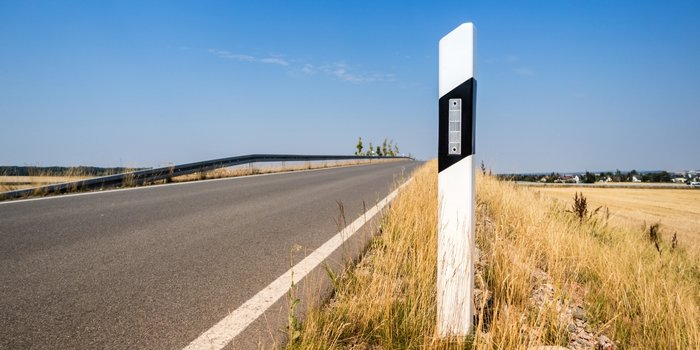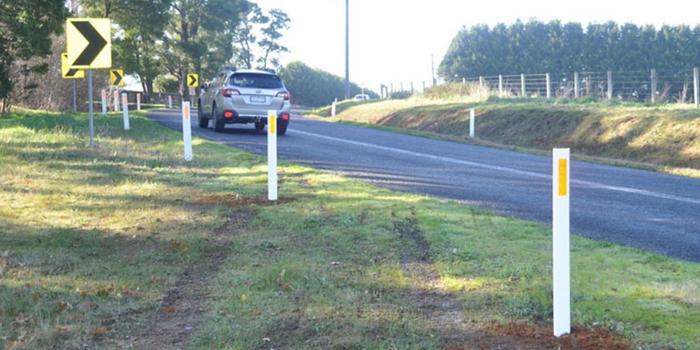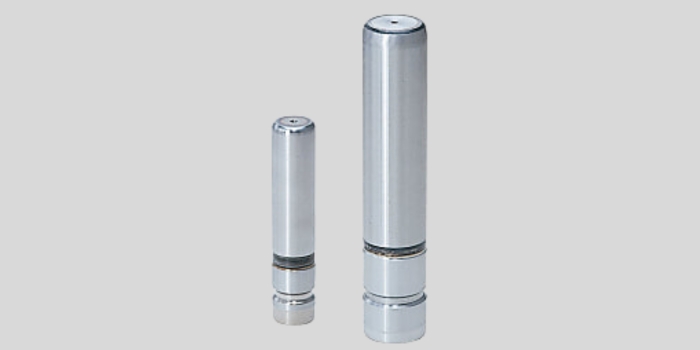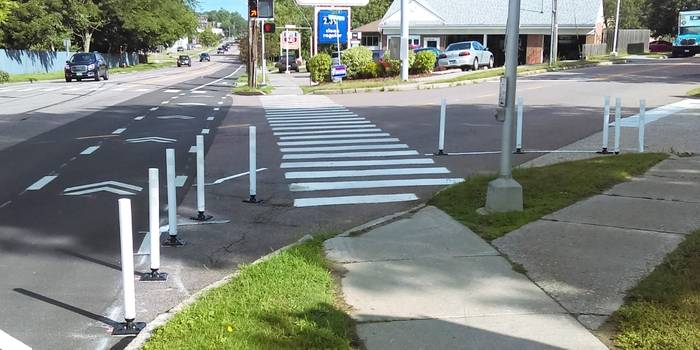When you drive on the road, it can be risky for you if you see no traffic lights. Also, if you don’t know about the presence of curves, edges or hazards on your way. Guide posts are small but powerful tools to solve this problem.
Today, you will learn guide post meaning and their importance. We will also tell you how you can install guide posts.
Road Guide Post
Guide posts are also known as edge marker posts, road edge guide posts, delineator posts and roadside guide posts. Basically, they are placed on rural roads to warn you about changes in your path. You can see a retroreflective sheet or reflector on guide posts. Actually, this part of a guidepost makes it useful even at night. Especially on a road that is not lit properly.

Types of Roadside Guide Posts
Rigid or Semi-Flexible Guide Posts
This is a solid guide post that is installed on edges of roads. It is made up of steel, timber, PVC, PE, glass fiber and other hard materials. So, these materials make them unbendable and durable. You can install this type of guide post where risk of strike is not common.

Steel Guide Posts
As its name shows, this type of rigid guide posts are made up of only stainless steel or galvanized steel. That is why they are a stronger option for your safety. Typically, you can see a corrosion-free coating on them to make it weather-resistant.

Flexible Guide Posts
You can find these guide posts near driveways, tight curves and narrow shoulders. The reason is that they are made up of flexible material, which makes them bendable.
Moreover, usually you can see a hinged part with them. The material and hinge protect them from damage in case of strikes.

Importance of Guide Posts
When you are on a road you do not know what is next to you. Therefore, these guide posts play an important role to tell you about upcoming dangers in advance. Well, they help you in areas with visibility issues.
They also protect you in case of bad weather conditions like rain, snow and fog. You can see them on steep and curved roads where they tell you the exact location of a curve. Therefore, it reduces the ratio of accidents.
Guide Post Dimensions
There are some specific dimensions that you have to follow when you want to install guide posts.
- Always ensure that guide posts are at a uniform distance which makes a good flow on your road.
- If there is an adjacent traffic lane on your road then you can place them at a distance of 3m.
- In case when there is no shoulder then you have to keep space of 1.2 metres only.
- Place guide posts in a vertical or upright position.
- The total length of your guide post must be 1350 mm to 1400 mm.
- A guide post should be 90 cm or 900 mm above from the ground level.
- The width of a guide post must be 100mm with a tolerance of 2mm.
- You can increase this length when you want to place that guide post behind a guardrail.
Guide Post Installation Process
When you know all dimensions about guide posts then the process of installation becomes very easy.
Prepare Road
First of all, you have to prepare the place where you want to install your guide post. For this you have to clear all debris from that lane and make the surface even. After that, mark positions according to the required dimensions.
Attach With Driver
When you have marked all points then pick a guide post and attach it with a driver (special equipment used to dig earth). Now, stand the driver of this guide post in an upright position.
Insert the Post into Ground
After attachments, lift up the driver vertically and use your force to push it into the ground. You have to continue this process until a depth mark is reached at the surface. After this procedure is done, you can fit a safety cap on it.
which Guide Post is Best?
Well, the answer to this question depends on the type of a road and its AADT (Annual Average Daily Traffic). You can read this table to make a right decision.
| Road Type | AADT | Installation Area | Guide Post Type |
| Gravel road | More than 500 | Whole route | Semi-flexible or Flexible guide posts |
| Gravel Road | More than 100 | Selected sections | Flexible guide posts |
| Paved Road | More than 500 | Whole route | Rigid or Semi-flexible guide posts |
| Paved Road | More than 100 | Selected sections | Flexible or Semi-flexible guide posts |
Why and Where are Guideposts used?
There are many different reasons to install guide posts on roads. But, all of them are related to your safety.
- They are used to tell you the exact location of a curve or its end point.
- Reflective sheets that are applied on the post enhance your visibility at night.
- They guide you in bad weather conditions like in fog, rain and dust.
- You can get information about alignments of your long routes.
- Sometimes, they inform you that the upcoming road is under construction.
- Remote roads that are created to reach at mining sites also use these posts to guide heavy vehicles.
- You can use guide posts in parking areas to mark lanes or set boundaries.
- When a road has more tourists on it, you can use it to guide them about unclear paths.
- You can find them on runways & airport service roads. Actually, they are used here to guide maintenance vehicles.
For example, a road is covered with water, then you can use them to mark its edges.
- You can get help when you are driving an emergency vehicle to provide urgent services.
Conclusion
To sum up, guide posts have a big impact in making roads risk free for drivers. You must place high quality guide posts on highways to get clear direction, reduce crashes and improve visibility in all conditions.
Our company JACKWIN is located in China and we are a manufacturer and supplier of road safety products including guide posts. So, you can contact us now and get a quick quote.
See This Also


-80x69.png)

